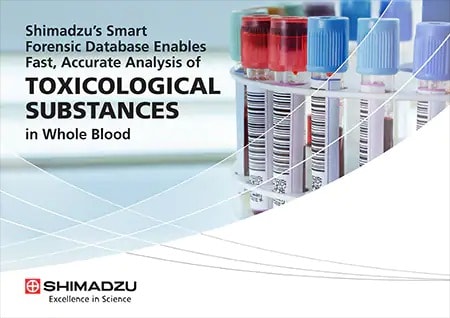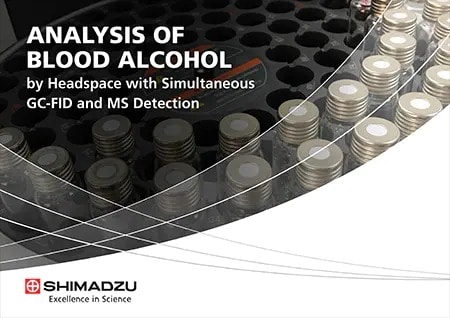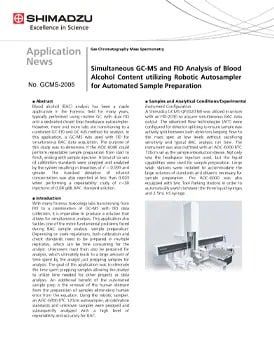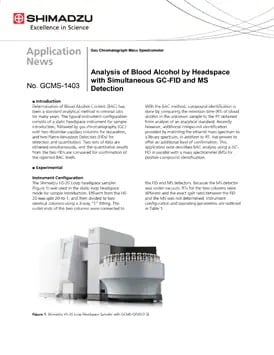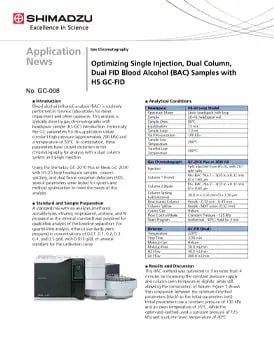Volatile Drug Screening & Confirmation
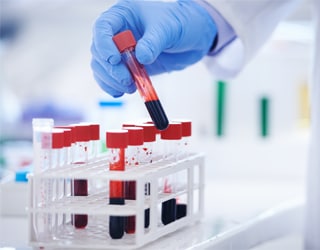
Volatile drug screening and confirmation (BAC). The analysis of ethanol (alcohol) in forensic laboratories is important when analyzing DUI cases. Screening for ethanol is typically done by a breathalyzer and further confirmation is done in a forensic lab with a blood sample. The most widely used method to accurately measure blood alcohol content (BAC) for impairment is using headspace sampling and dual column separation by gas chromatography with flame ionization detection.
E-books
Featured Applications
Simultaneous GC-MS and FID Analysis of Blood Alcohol Content utilizing Robotic Autosampler for Automated Sample Preparation
The analysis of blood alcohol using GC-FID and GC-FID-MS techniques has been the gold standard for many years. As law enforcement continues to enforce driving under the influence, the number of cases in a forensic laboratory have continually increased which in turn causes a backlog for turnaround time for each sample. Additionally, the sample preparation that is needed to prepare calibration and check standards in multiple replicates is time consuming. In this application, we describe using a robotic autosampler to perform automated sample preparation for all blood alcohol samples with excellent reproducibility and linearity.
Analysis of Blood Alcohol by Headspace with Simultaneous GC-FID and MS Detection
Determination of Blood Alcohol Content (BAC) has been a standard analytical method in criminal labs for many years. The typical instrument configuration consists of a static headspace instrument for sample introduction, followed by gas chromatography (GC) with two dissimilar capillary columns for separation, and two Flame Ionization Detectors (FIDs) for detection and quantitation. Two sets of data are obtained simultaneously, and the quantitative results from the two FIDs are compared for confirmation of the reported BAC levels.
Simultaneous GC-MS and FID Analysis of Blood Alcohol Content utilizing Robotic Autosampler for Automated Sample Preparation
The analysis of blood alcohol using GC-FID and GC-FID-MS techniques has been the gold standard for many years. As law enforcement continues to enforce driving under the influence, the number of cases in a forensic laboratory have continually increased which in turn causes a backlog for turnaround time for each sample. Additionally, the sample preparation that is needed to prepare calibration and check standards in multiple replicates is time consuming. In this application, we describe using a robotic autosampler to perform automated sample preparation for all blood alcohol samples with excellent reproducibility and linearity.
Optimizing Single Injection, Dual Column, Dual FID Blood Alcohol (BAC) Samples with HS GC-FID
Blood alcohol (ethanol) analysis (BAC) is routinely performed in forensic laboratories for driver impairment and other casework. This analysis is typically done by gas chromatography with headspace sample (HS-GC) introduction. Historically the GC parameters for this application utilize constant high pressure (approximately 200 kPa) and a temperature of 50°C. In combination, these parameters have caused distortion in the chromatography for analysis with a dual column system and single injection. Using the Shimadzu GC-2010 Plus or Nexis GC-2030 with HS-20 loop headspace sampler, column splitting, and dual flame ionization detectors (FID), several parameters were tested for system and method optimization to meet the needs of this analysis.



